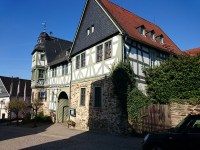I am not a fan of any particular superhero comics, I have never read any and do not plan to do so in foreseable future. I do however on occasion read some web comics. And the one I wish to recommend today is Hominids by Jordan Kotzebue.
The comic is probably NSFW though (partial nudity), but the artwork is exceptional and the storytelling very captivating. I think you will enjoy it.































